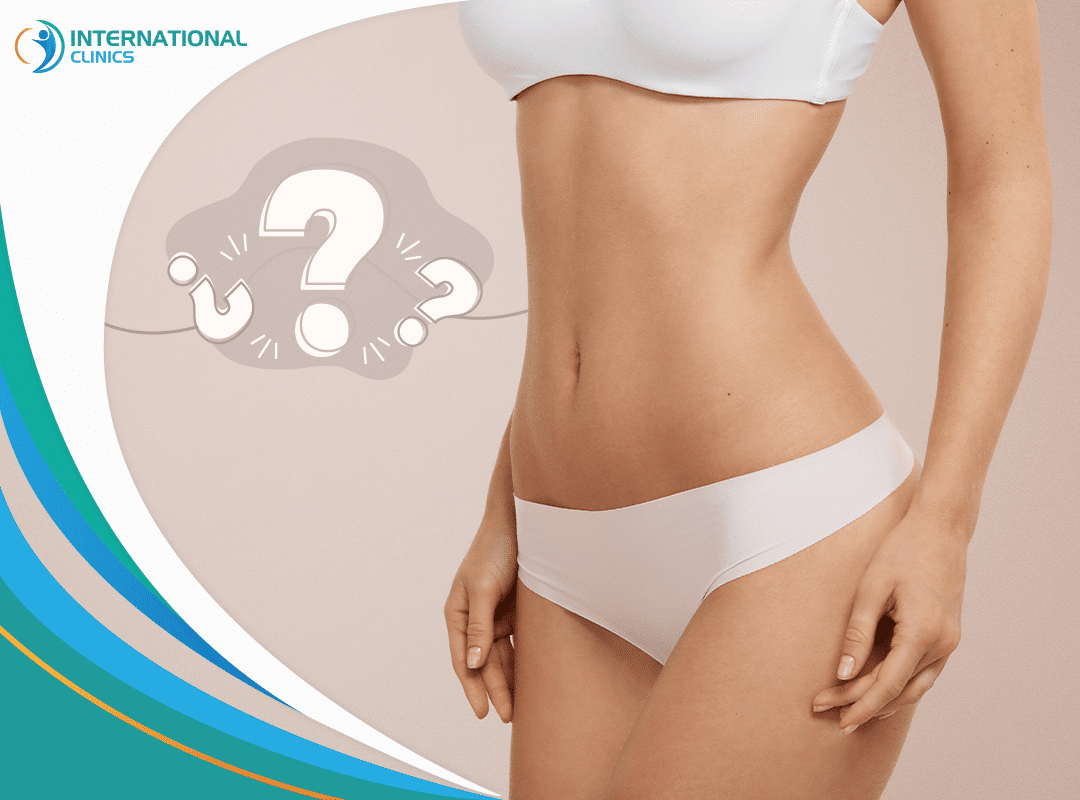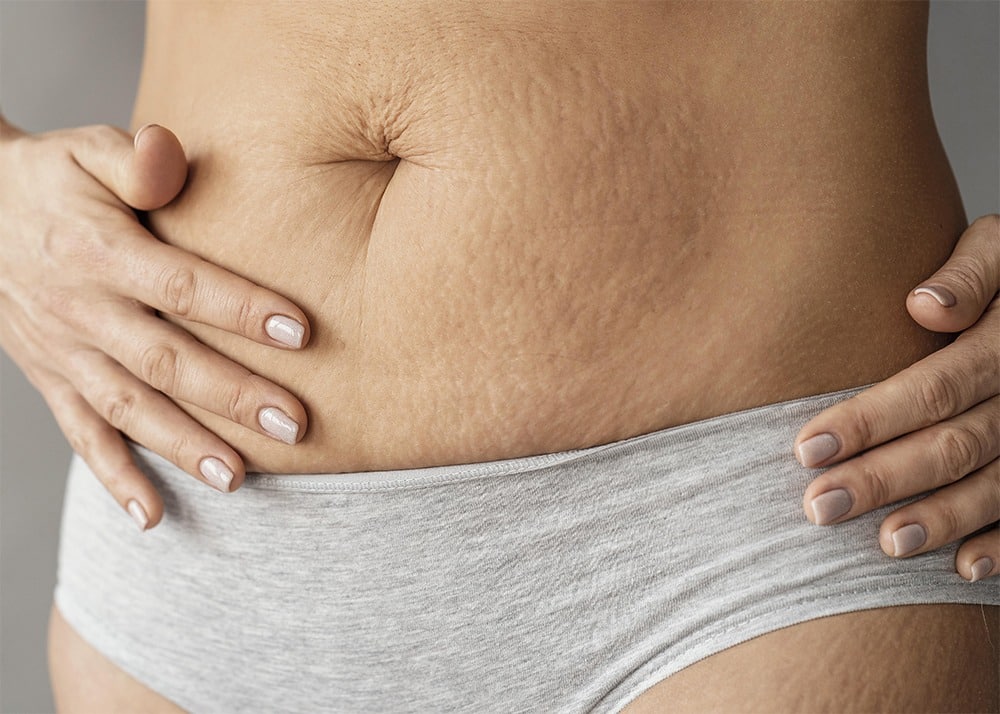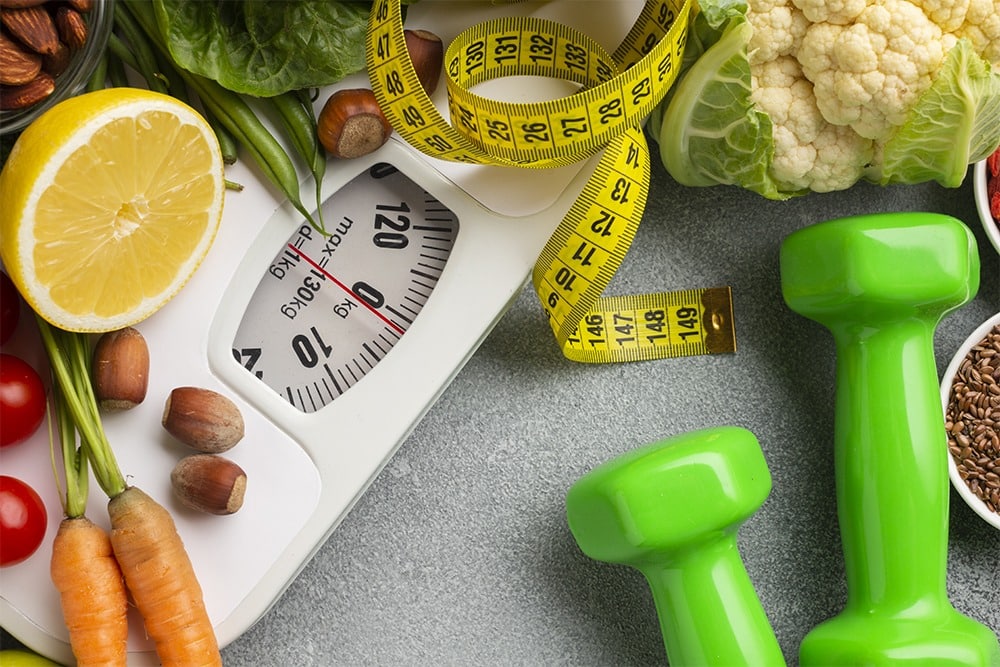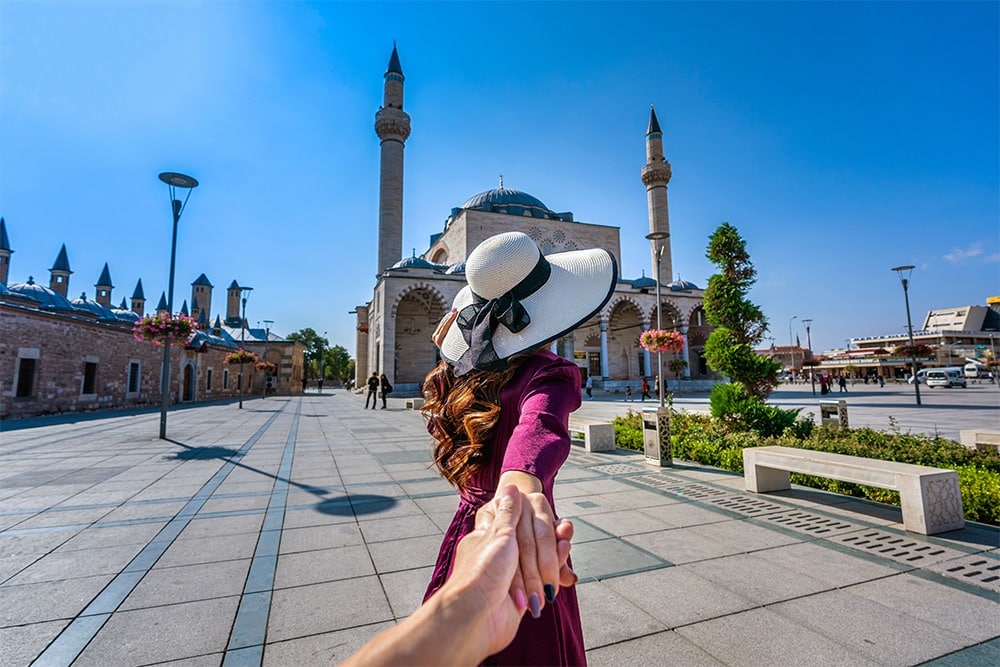




Are you tired of dealing with lumps and bumps after your liposuction in Turkey? Don't worry, you're not alone. Many individuals who undergo lipo surgery in the stomach area often face this common concern. But the good news is that there are effective techniques to help you achieve a smooth stomach and enhance your new contour.
We'll discuss how to smooth out stomach after liposuction using non-invasive treatments that can further improve your results without requiring additional surgery. So, if you've been wondering how to smooth out your stomach after liposuction, keep reading. In just a matter of weeks, you'll be able to enjoy a smoother and more confident appearance. Let's dive right in!

Liposuction is a popular cosmetic procedure that helps remove excess fat from various parts of the body, including the stomach. However, it's not uncommon for patients to experience the formation of lumps in the treated area post-surgery. These lumps can be concerning, but understanding their causes can help alleviate worries.
While it's normal for some degree of lumpiness to occur after liposuction, there are several solutions available that can help smooth out your stomach area:
Fibrosis is a common cause of lumps after liposuction. While it's challenging to completely prevent its formation, there are ways to manage it effectively:
Surgeons employ various specialized techniques. These methods are designed to ensure optimal results and give you the smooth and sculpted appearance you desire.
To further enhance the smoothness of your stomach after liposuction, some individuals opt for laser skin tightening treatments. This non-invasive procedure stimulates collagen production and tightens loose skin, resulting in a firmer and smoother appearance.
During laser skin tightening, a specialized device delivers targeted heat to the deeper layers of your skin. This process encourages collagen remodeling, which gradually improves the elasticity and tightness of the treated area over time.
It's important to note that laser skin tightening is not a substitute for liposuction but rather an additional treatment that can complement its results by addressing loose or sagging skin.
By combining these techniques - specialized liposuction approaches, proper post-operative care, and optional laser skin tightening - you can achieve a smoother stomach contour after undergoing liposuction. Consult with an experienced plastic surgeon to determine which methods are most suitable for your specific needs and goals.
There are plenty of non-invasive treatment options available that can help improve the contour of your stomach after liposuction. Let's dive into some innovative procedures that might just be what you're looking for.
Laser therapy and radiofrequency treatments have gained popularity in recent years for their ability to target specific areas and reduce lumps effectively. These procedures work by using heat energy to break down fat cells, resulting in a smoother appearance. However, choosing these techniques may add up to the liposuction cost in Turkey.
Laser therapy is a non-invasive treatment that uses laser technology to melt away excess fat cells in specific areas such as your stomach. The laser heats up the fat cells, causing them to be eliminated naturally by your body over time. This procedure is typically performed in multiple sessions, allowing for gradual results and minimal downtime.
Another option is a procedure that utilizes radio waves to heat up the deeper layers of your skin, stimulating collagen production and tightening loose tissues. By doing so, it can help smooth out any remaining lumps or irregularities on your stomach after liposuction.
Before diving headfirst into any non-invasive treatment option, it's important to discuss the potential benefits and limitations with your healthcare provider. While these procedures can be highly effective at improving stomach contour after liposuction, they may not be suitable for everyone or produce drastic results like surgical interventions do.
That being said, one of the major advantages of non-invasive treatments is that they generally come with fewer complications and side effects compared to surgery. Common side effects, if any, are usually mild and temporary, such as redness or swelling at the treatment site.
Fibrosis refers to the formation of scar tissue, which can occur after liposuction surgery. It is a natural part of the healing process, but it can sometimes lead to the development of lumpy spots or bumps on the treated area. These lumpy spots are often caused by fat cells that have been damaged during the procedure and have not healed properly.
When fibrosis occurs, it can affect the overall appearance of your stomach after liposuction. The presence of lumpy and hard spots can be frustrating, especially when you were expecting smooth results. However, there are several tips you can follow to manage fibrosis effectively and achieve a smoother outcome.
In some cases, fibrosis after liposuction may require medical interventions. If you notice persistent lumpy spots or experience discomfort, it is essential to consult with your surgeon for further evaluation and guidance. They may recommend the following interventions:
It's important to understand how your body naturally heals and how this affects the dissipation of lumps. The body has a complex healing process that involves inflammation, tissue remodeling, and collagen production. These processes work together to gradually reduce the appearance of lumps on your stomach.
The timeline for lump dissipation varies from person to person. In general, you can expect to see improvements in the first few weeks following the procedure. However, it may take several months for all the lumps to completely disappear. It's crucial to be patient during this time and allow your body sufficient time to heal.
Several factors can influence how quickly lumps dissipate after liposuction. One crucial factor is individual healing abilities. Each person's body reacts differently to surgery and heals at its own pace. The extent of liposuction performed and the amount of fat removed can also affect how long it takes for lumps to smooth out.
To have a better understanding of when you can expect a smooth stomach after liposuction, it's essential to have a discussion with your surgeon. They will be able to provide insight into their experience with similar cases and give you an estimated timeline based on their expertise. It's important not to rush the healing process or set unrealistic expectations for immediate results.
One effective way to achieve a smooth stomach is through various massage techniques that can help smoothen the stomach area. Let's dive into some options you can consider.
One popular technique for post-liposuction recovery is lymphatic drainage massage. This specialized therapy focuses on stimulating the lymphatic system, which plays a crucial role in eliminating waste and toxins from the body. By applying gentle pressure and rhythmic movements, lymphatic drainage massage helps reduce swelling, improve circulation, and promote faster healing.
During the healing process after liposuction, excess fluids can accumulate in the treated areas, leading to discomfort and prolonged recovery time. Lymphatic drainage massage aids in clearing these fluids from the body more efficiently, reducing pain and swelling.
While professional massages are beneficial, you can also incorporate self-massage techniques into your post-operative routine for improved results. Here are a few self-massage practices you can try at home:
| Gentle Circular Strokes | Using your fingertips or palm, gently apply circular strokes on your stomach area. This helps stimulate blood flow, relax muscles, and break up any remaining scar tissue. |
| Light Tapping | With fingertips slightly curled, lightly tap your abdomen in a rhythmic manner. This technique promotes circulation while providing a soothing sensation. |
| Kneading Motion | Place both hands on either side of your stomach and use a kneading motion to gently lift and release the skin in small sections. This helps loosen tissues and encourages lymphatic drainage. |
While massages can be beneficial for smoothing out the stomach area after liposuction, it's crucial to understand when to start incorporating them into your post-operative routine. Typically, surgeons recommend waiting until the initial healing phase is complete before beginning any massage techniques. This ensures that your body has had enough time to rest and heal properly.
Once you receive clearance from your surgeon, gradually introduce massages into your routine. Start with gentle techniques and slowly increase pressure as you progress through the healing process. Always listen to your body and consult with your surgeon if you have any concerns or questions.
If you've recently undergone liposuction and are dealing with lumps or unevenness in your stomach area, don't worry! There are several effective strategies you can try to smooth out your stomach and achieve the desired contour.
One of the best ways to reduce lumps after liposuction is by engaging in targeted exercises that help break down fibrotic tissue. These exercises focus on improving blood circulation and lymphatic drainage in the treated area. Here are some exercises you can incorporate into your routine:
A healthy diet plays a crucial role in promoting optimal healing after liposuction. By nourishing your body with essential nutrients, you can support the recovery process and minimize post-surgical complications. Consider incorporating these foods into your diet:
While targeted exercises and a healthy diet are beneficial for reducing lumps after liposuction, there are additional treatments available that can further enhance your results:
It's essential to discuss these strategies with your surgeon before implementing them into your routine. They can provide personalized recommendations based on your specific case and ensure that the chosen exercises and treatments align with your recovery process.

After undergoing liposuction, it's important to focus on maintaining a healthy diet that supports optimal healing and helps you maintain the results of the procedure. Here are some dietary recommendations to consider:
Regular exercise plays a vital role in maintaining a smooth stomach after liposuction. However, it's important to follow specific guidelines tailored for post-liposuction patients:
Compression garments play a crucial role in the recovery process after liposuction. These specialized garments are designed to provide support, reduce swelling, and aid in shaping the treated area. Fluid buildup can lead to discomfort and prolonged healing time. However, wearing compression garments helps to compress the tissues, preventing excessive fluid accumulation and reducing swelling.
During the initial stages of recovery, you may need to wear compression garments 24/7 for around four weeks. This constant pressure ensures consistent support and reduces swelling effectively. As your recovery progresses, your surgeon may advise you to gradually decrease the duration of wear or switch to wearing them only during daytime hours.
Choosing comfortable and properly fitting compression garments is vital for an effective recovery experience. Ill-fitting or uncomfortable garments can cause unnecessary pain or restrict movement during daily activities. Here are some tips to consider when selecting compression garments:
While compression garments offer numerous benefits, it is important to use them correctly to avoid potential risks. Improper or inconsistent usage can lead to suboptimal outcomes and complications. Some risks associated with improper compression garment usage include:
Achieving perfectly smooth results may not always be possible due to various factors. One common factor is the presence of residual fat deposits that were not completely removed during the initial procedure. These remaining pockets of fat can cause irregularities in the contour of your stomach.
Another factor that can contribute to an uneven appearance is inadequate skin elasticity. If your skin lacks elasticity, it may not shrink properly after the removal of fat cells, resulting in loose or sagging skin. This can give your stomach a lumpy or bumpy texture.
If residual fat deposits are causing the problem, your surgeon may recommend a revision procedure called touch-up liposuction. During this procedure, any remaining pockets of fat will be targeted and removed, helping to improve the overall smoothness of your stomach.
In cases where inadequate skin elasticity is to blame for the irregularities, additional treatments such as skin tightening procedures may be necessary. These treatments can help stimulate collagen production, tighten the skin, and improve its overall texture.
If you are still dissatisfied with the appearance of your stomach after liposuction, there are several revision procedures available that can help address persistent irregularities. Some options include:
Ultimately, the best course of action to achieve a smoother stomach after liposuction is to have an open and honest discussion with your surgeon. They will be able to evaluate your specific situation and recommend the most appropriate treatment options.
In conclusion, achieving a smooth stomach after liposuction requires a combination of proper post-operative care, healthy lifestyle habits, and patience. By consulting with your surgeon and following their instructions, you can ensure a smooth recovery and minimize complications.
Maintaining a balanced diet, a regular exercise routine, and staying hydrated are crucial for optimal results. Incorporating massage techniques can also help in smoothing out the stomach area. Additionally, considering non-invasive treatments, such as radiofrequency therapy or laser skin tightening, may further enhance the outcome.
Remember, results take time, so be patient and consistent in your efforts. By following these steps and seeking professional guidance, you can achieve the desired smoothness and contour of your stomach after liposuction.

The level of pain experienced during and after liposuction can vary from person to person. While some individuals may experience mild discomfort, others may have a higher threshold for pain. Your surgeon will discuss pain management options with you and prescribe appropriate medications to help minimize any discomfort.
Liposuction primarily targets excess fat deposits rather than cellulite. While it may improve the appearance of cellulite in some cases, it is not a guaranteed solution for eliminating cellulite entirely. Alternative treatments such as laser therapy or radiofrequency can be more effective in reducing the appearance of cellulite.
Liposuction permanently removes fat cells from treated areas; however, if you gain weight after the procedure, new fat cells can develop in untreated areas. It is crucial to maintain a stable weight through healthy lifestyle choices to ensure long-lasting results.
The recovery period varies depending on the extent of the procedure and individual healing capabilities. Most people can return to work within a few days to a week after undergoing liposuction. However, it is essential to follow your surgeon's post-operative instructions and avoid strenuous activities until cleared by your doctor.
While some changes are noticeable immediately after liposuction, it takes time for swelling to subside and for your body to heal fully. You may see gradual improvements over several weeks or months as your body adjusts and recovers from the procedure.
The editorial team of International Clinics
Our medical consultants are available around the clock to answer your questions, completely free of charge.